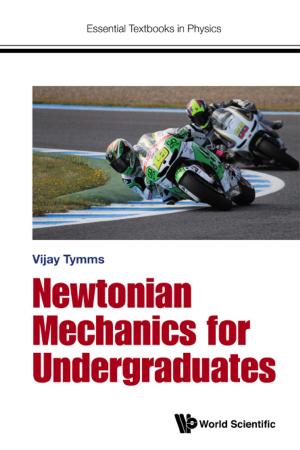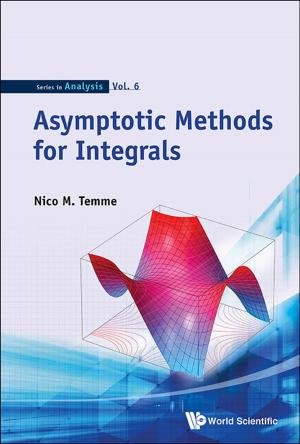Number Theory and Its Applications
Nonfiction, Science & Nature, Mathematics, Number Theory, Algebra| Author: | Fuhuo Li, Nianliang Wang, Shigeru Kanemitsu | ISBN: | 9789814425650 |
| Publisher: | World Scientific Publishing Company | Publication: | November 28, 2012 |
| Imprint: | WSPC | Language: | English |
| Author: | Fuhuo Li, Nianliang Wang, Shigeru Kanemitsu |
| ISBN: | 9789814425650 |
| Publisher: | World Scientific Publishing Company |
| Publication: | November 28, 2012 |
| Imprint: | WSPC |
| Language: | English |
This book emphasizes the role of symmetry and presents as many viewpoints as possible of an important phenomenon — the functional equation of the associated zeta-function. It starts from the basics before warping into the space of new interest; from the ground state to the excited state. For example, the Euler function is treated in several different places, as the number of generators of a finite cyclic group, as one counting the order of the multiplicative group of reduced residue classes modulo q, and as the order and degree of the Galois group of the cyclotomic field, respectively.
One of the important principles of learning is to work with the material many times. This book presents many worked-out examples and exercises to enhance the reader's comprehension on the topics covered in an in-depth manner. This is done in a different setting each time such that the reader will always be challenged. For the keen reader, even browsing the text alone, without solving the exercises, will yield some knowledge and enjoyment.
Contents:
- Elements of Algebra
- Rudiments of Algebraic Number Theory
- Arithmetical Functions and Stieltjes Integrals
- Quadratic Reciprocity Through Duality
- Around Dirichlet L-Functions
- Control Systems and Number Theory
Readership: Advanced undergraduate students, graduate students and researchers interested in algebra through number-theoretic examples, number-theoretic control systems, etc.
Key Features:
- Introduces the reader to the very basics of algebra through number-theoretic examples. This is intended as a preliminary to Kitaoka's forthcoming book on algebraic number theory
- Full of well-done examples and worked out exercises which are accessible even to undergraduates
- Gives a few different proofs of the most spectacular quadratic reciprocity law, which will complement the existing colossal work of F Lemmermeyer on reciprocity laws. Also, the dependence on the functional equations is stressed and clarified
- Includes many other topics which have never been touched in existing books, e.g. the elementary but first treatment of number-theoretic control systems
This book emphasizes the role of symmetry and presents as many viewpoints as possible of an important phenomenon — the functional equation of the associated zeta-function. It starts from the basics before warping into the space of new interest; from the ground state to the excited state. For example, the Euler function is treated in several different places, as the number of generators of a finite cyclic group, as one counting the order of the multiplicative group of reduced residue classes modulo q, and as the order and degree of the Galois group of the cyclotomic field, respectively.
One of the important principles of learning is to work with the material many times. This book presents many worked-out examples and exercises to enhance the reader's comprehension on the topics covered in an in-depth manner. This is done in a different setting each time such that the reader will always be challenged. For the keen reader, even browsing the text alone, without solving the exercises, will yield some knowledge and enjoyment.
Contents:
- Elements of Algebra
- Rudiments of Algebraic Number Theory
- Arithmetical Functions and Stieltjes Integrals
- Quadratic Reciprocity Through Duality
- Around Dirichlet L-Functions
- Control Systems and Number Theory
Readership: Advanced undergraduate students, graduate students and researchers interested in algebra through number-theoretic examples, number-theoretic control systems, etc.
Key Features:
- Introduces the reader to the very basics of algebra through number-theoretic examples. This is intended as a preliminary to Kitaoka's forthcoming book on algebraic number theory
- Full of well-done examples and worked out exercises which are accessible even to undergraduates
- Gives a few different proofs of the most spectacular quadratic reciprocity law, which will complement the existing colossal work of F Lemmermeyer on reciprocity laws. Also, the dependence on the functional equations is stressed and clarified
- Includes many other topics which have never been touched in existing books, e.g. the elementary but first treatment of number-theoretic control systems















